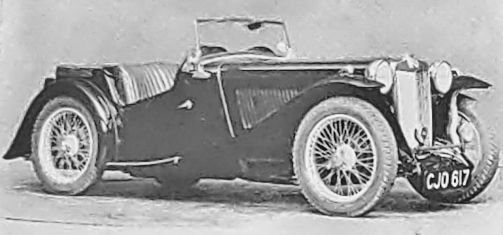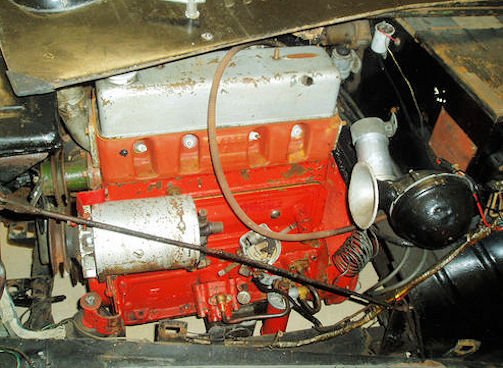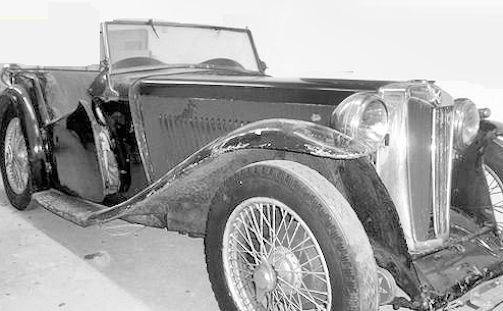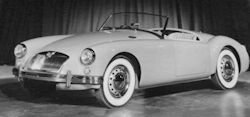MG TA
 | |
Production period: | 1936 to 1939 |
Class | Sports Car |
Body versions: | Roadster, Coupe, Cabriolet |
Engines: | Gasoline : 1.3 litres (37 kW) |
Length: | 3556 mm |
Width: | 1422 mm |
Wheelbase: | 2388 mm |
Curb weight: | 795 kg |
The MG TA 1936 replaced the PB Midget, from which it had been further developed. Compared to its predecessor, the track was enlarged by 76 mm to 1143 mm and the wheelbase was extended by 178 mm to 2388 mm.
History
After 1935, the traditional overhead-camshaft engine of the MG Midget was dropped, and a quieter, simpler and more reliable pushrod overhead-valve type substituted. The o.h.c. Midgets had cleverly used their vertical drive shafts to the camshaft as the dynamo armature, but this did not enhance the performance of the dynamo, into which oil penetrated. The new T series were generally less spartan cars, in keeping with the company's abandonment of competitions, their bigger, long-stroke engines less fussy, their bodies roomier and more comfortable.

The advanced overhead camshaft (ohc) engine was not adopted because it was not used on any other production vehicle. Instead, the MPJG engine was used with the Wolseley Ten's valves, but it was equipped with two SUs, a modified camshaft and better gas management. The displacement was only 1292 cc (bore 63.5 mm × stroke 102 mm). The upper gears of the four-speed gearbox were synchronized. Power output was 50 b.h.p. at 4500 r.p.m., and the axle ratio was higher, which made them faster than the P series
although heavier the TA two-passenger sports model, and they stopped better, too, with their Lockheed hydraulic brakes.

Like the PB most vehicles were built as open two-seater with a body in mixed construction (steel sheet on a framework made of ash wood). In addition, there was from 1938 a convertible from Tickford with bodies of Salmsons from Newport Pagnell and an "airline" coupe, as it was from the P-Type knew, but of which only one copy should have been made. It reached a top speed of about 125 km / h in standard equipment and an acceleration from 0 to 100 km / h in 23.1 seconds. Unlike the PB, the TA had hydraulically operated brakes.





